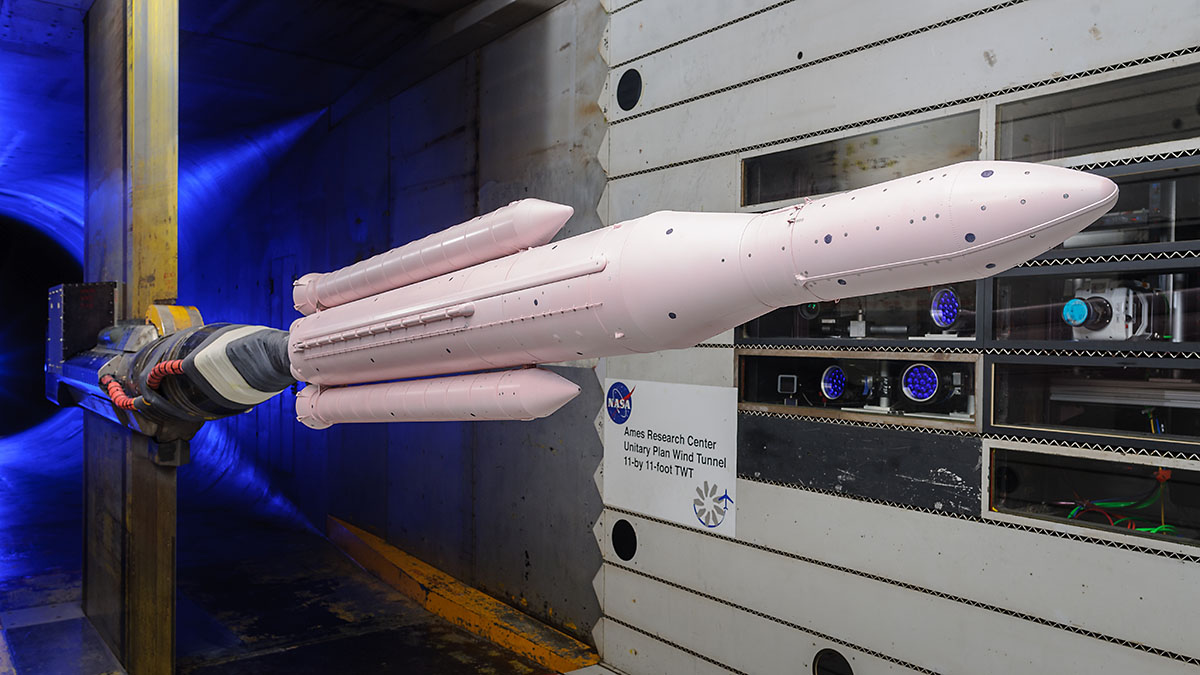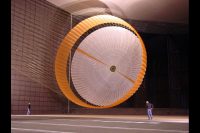A model of the Space Launch System rocket covered in a thin coat of pink, pressure-sensitive paint is mounted in a wind tunnel at NASA’s Ames Research Center. The high-tech paint acts as a pressure sensor covering the entire surface of the rocket during tests simulating its launch to space. (NASA/Ames Research Center/Dominic Hart)
Home A model of the Space Launch System rocket covered in a thin coat of pink, pressure-sensitive paint is mounted in a wind tunnel at NASA’s Ames Research Center. The high-tech paint acts as a pressure sensor covering the entire surface of the rocket during tests simulating its launch to space. (NASA/Ames Research Center/Dominic Hart) A model of the Space Launch System rocket covered in a thin coat of pink, pressure-sensitive paint is mounted in a wind tunnel at NASA's Ames Research Center. The high-tech paint acts as a pressure sensor covering the entire surface of the rocket during tests simulating its launch to space. (NASA/Ames Research Center/Dominic Hart)
A model of the Space Launch System rocket covered in a thin coat of pink, pressure-sensitive paint is mounted in a wind tunnel at NASA’s Ames Research Center. The high-tech paint acts as a pressure sensor covering the entire surface of the rocket during tests simulating its launch to space. (NASA/Ames Research Center/Dominic Hart)




